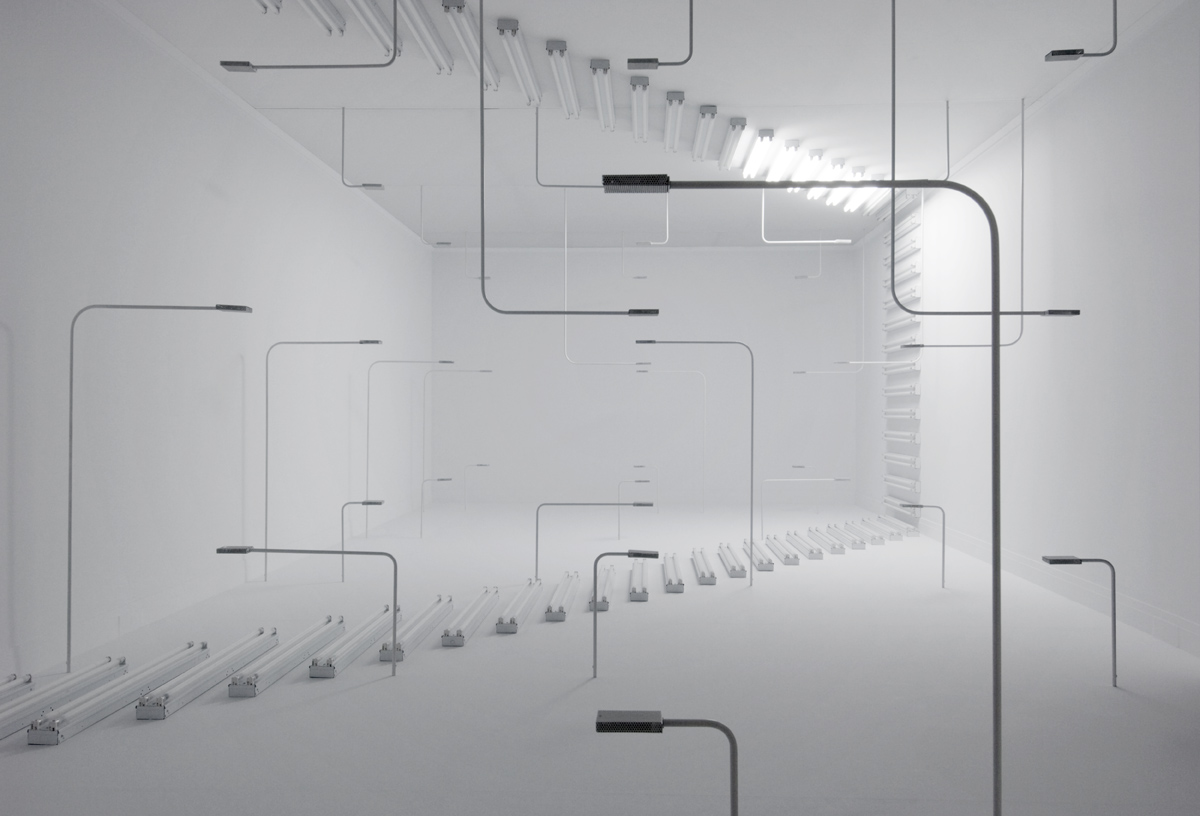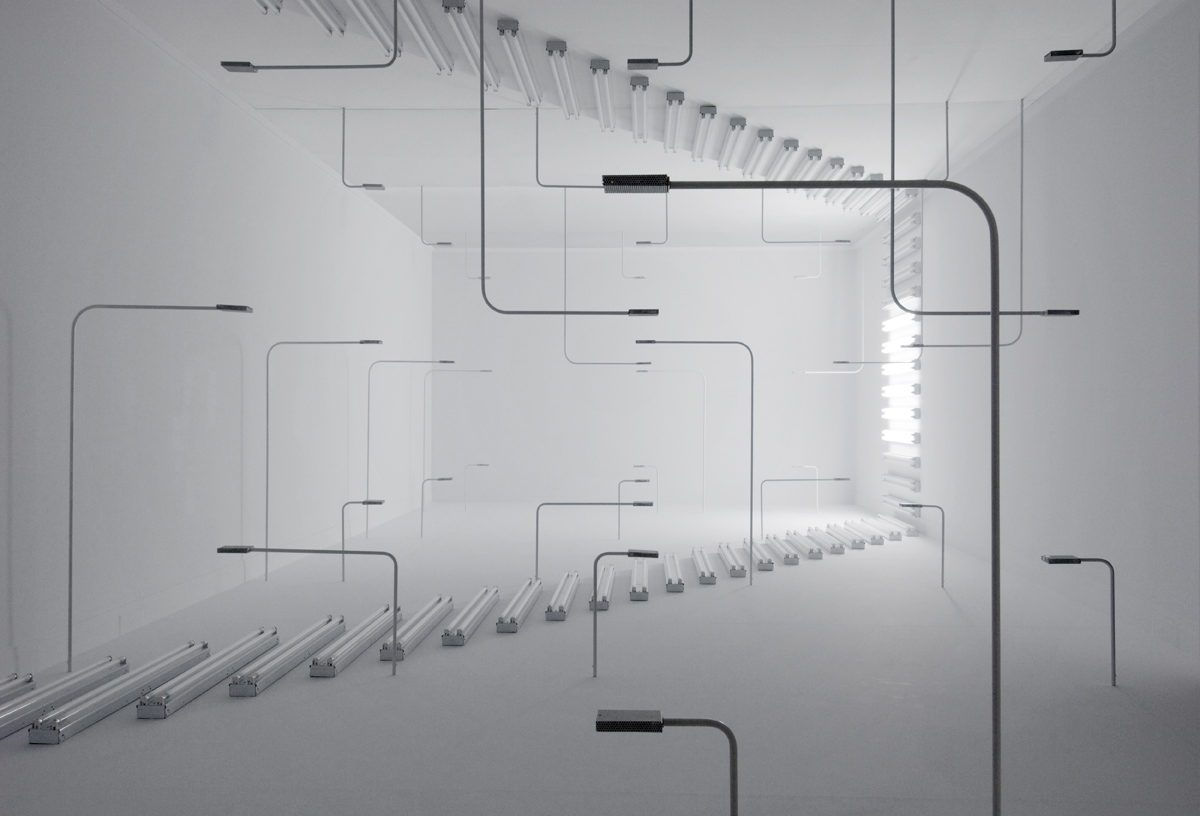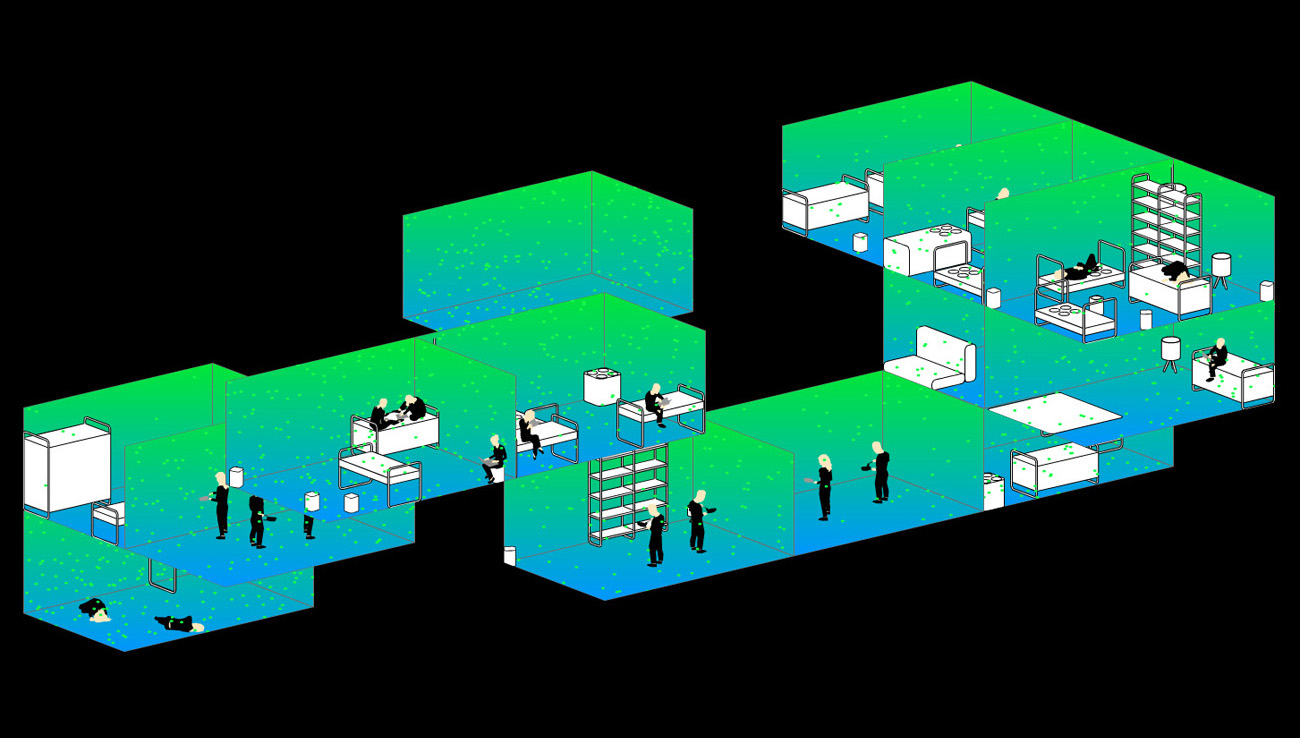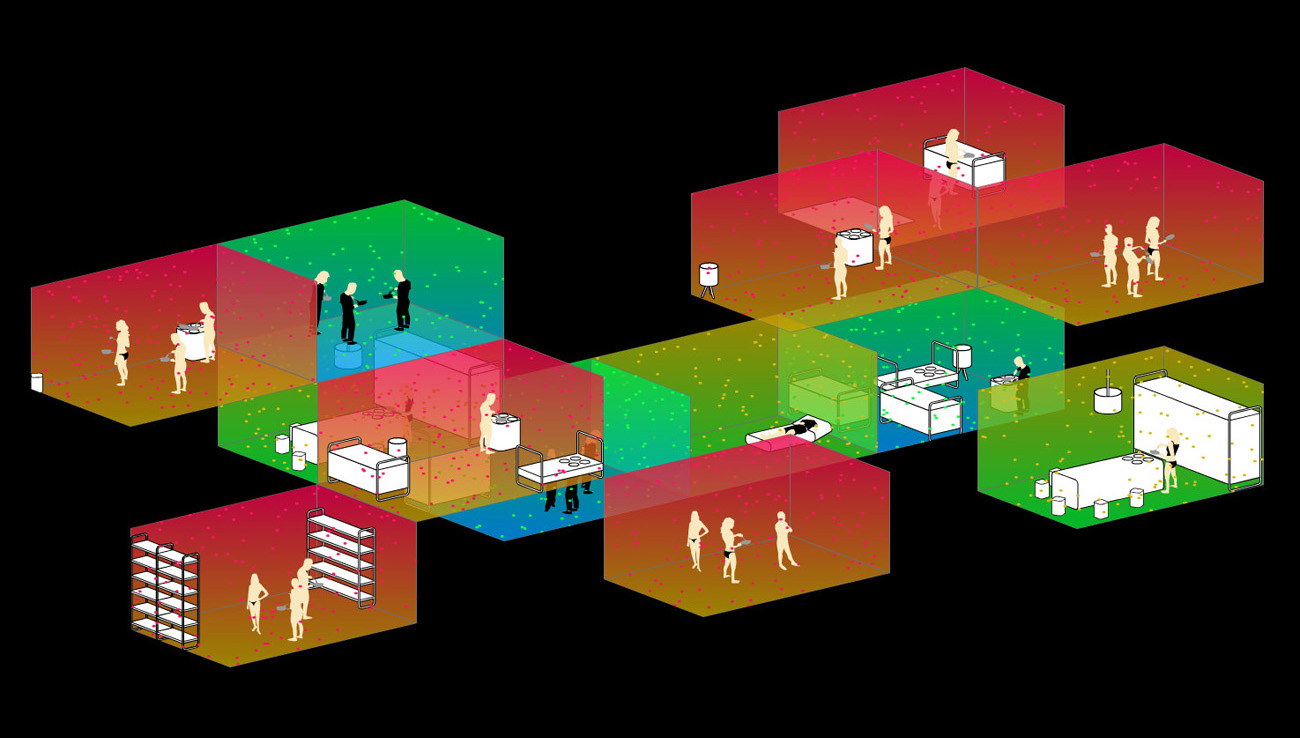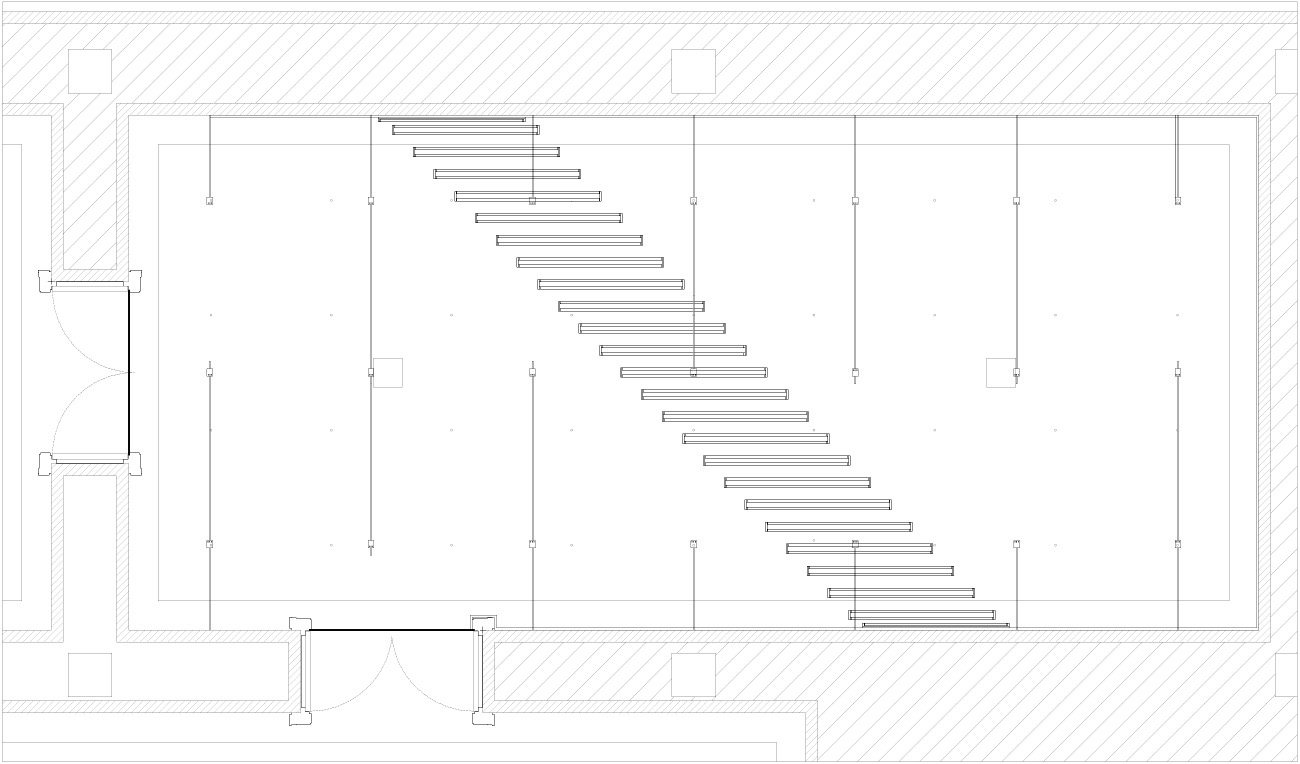
click
images fullscreen
< > 1 2 3 4 5 6 7 8 9 10 11 12
Interior weather
Interpretive architecture
The installation at the CCA is conceived as two spaces, one gallery designated as the locus of production and measurement of an "interior weather" condition, and the other as the locus of interpretation of the resultant data. The first room could be described as objective, the second as subjective. The goal is to project an architecture that is capable of indicating possible uses of space which are dictated only by the chance confluence of three climatic parameters: temperature (celsius), light intensity (lux), and relative humidity (%), so that T * lux * HR = form and function. The installation is conceived as a study to test the potential of fluctuating climatic conditions to generate new functions, and thus new architectural programmes. The proposals offered here are in no sense univocal: they represent the realm of sheer accident and possibility, one interpretation, and obviously not the only one.
Taking inspiration from the history of dwelling, in which climatic conditions have been the traditional generator of functions, we have also drawn upon ergonomic recommendations for lighting, Swiss and EU thermal guidelines, and ambient temperature levels in relation to a range of different activities and types of clothing: precise manual work, for instance, calls for bright light, while heavy physical activity suggests a cool temperature. Our three parameters are keyed to sustainability-oriented reductions in energy expenditure. Temperature, light intensity, and relative humidity are understood as the three elements of a specific equation which translates into an atmospheric or climatic condition; the combination and recombination of these three parameters suggest an infinite number of possible interior weather situations. Temperature variations define what degree of clothing is appropriate, for example naked at 28° C, light clothing at 23° C, and outdoor wear at 16° C, and thus define the subject. Variations in light intensity define the activities in which this subject might engage in this space, becoming the verbs that animate the subject. The humidity level suggests a space as complement. Each equation invents certain activities for certain subjects in certain places, however these amount to purely objective readings.
team
Jérôme Jacqminpartners
Alain Robbe-Grillet, École Cantonal d'Art de Lausanne (ECAL), École Polytechnique Fédéral de Lausanne (EPFL), fabric | chclient
Canadian Centre for Architecture (CCA)location, date
"Environment: Approaches for Tomorrow" curated by Giovanna Borasi and Mirko Zardini, Montreal, Canada, 2006^

